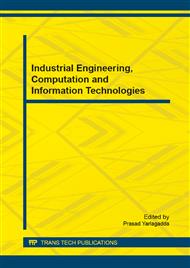p.463
p.471
p.475
p.480
p.488
p.492
p.498
p.505
p.510
Fog and Hazy Simulation for outside Lighting Study
Abstract:
With the high humidity caused by the urban microclimate, the visibility is greatly reduced due to the fog weather as well as the hazy weather formed by the accumulation of pollutant and vapor. In order to evaluate how the fog and haze weather affects outside lighting, a hazy simulation environment is introduced in this paper. An ultrasonic humidifier is used to produce droplets for fog simulation. Haze is simulated by using air blower to blow plant ashes. Transmittance of several different light sources under the simulated fog and haze conditions is shown. The results can be used to study outside lighting.
Info:
Periodical:
Pages:
488-491
Citation:
Online since:
December 2014
Authors:
Keywords:
Price:
Сopyright:
© 2015 Trans Tech Publications Ltd. All Rights Reserved
Share:
Citation:


